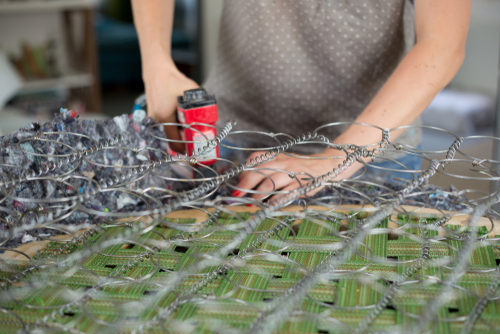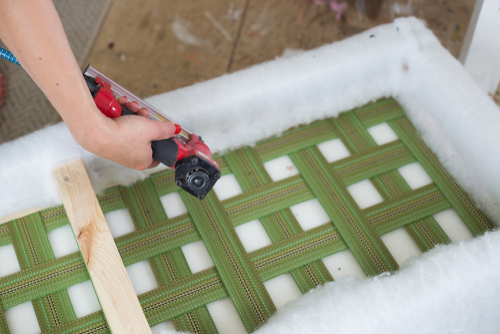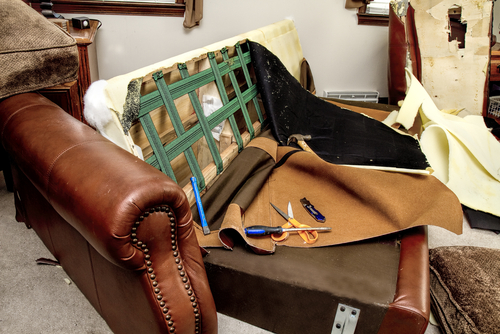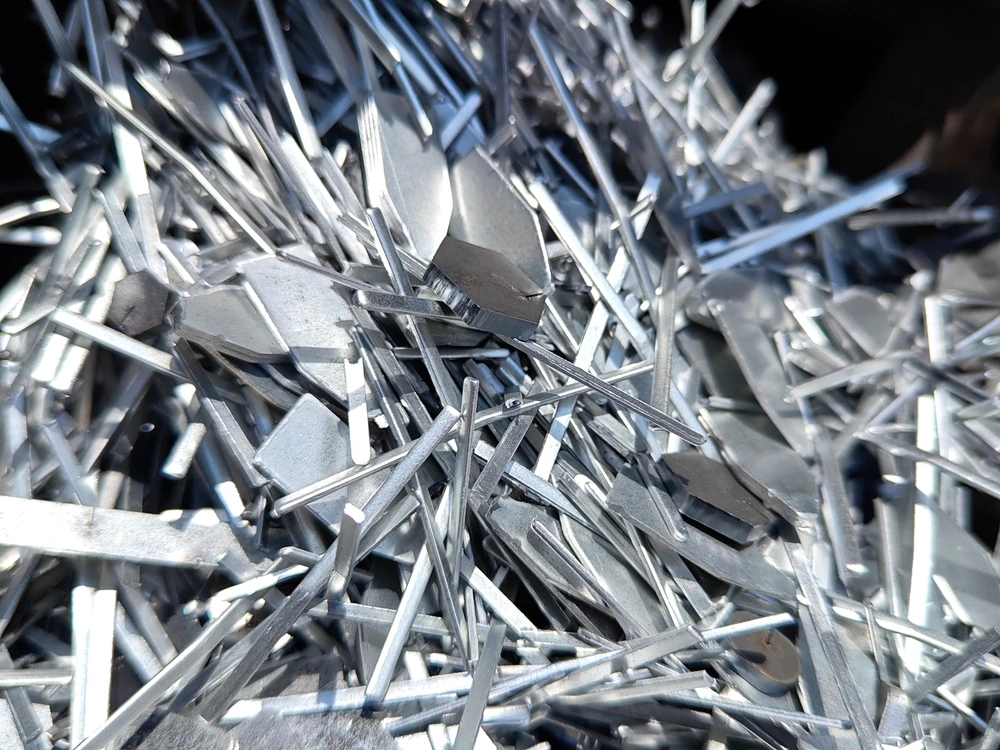Taking apart a couch might seem like a daunting task, but with the right approach and some basic tools, it can be done in a straightforward manner. Start by removing the cushions and identifying any screws or bolts that hold the legs and frame together. Dissembling a couch not only makes it easier to dispose of but also simplifies moving it through tight spaces.
By examining the structure of your couch, you’ll discover that many models share common components, whether it’s a standard sofa, a recliner, or a sectional. Using tools like a wrench or screwdriver, you can systematically detach each part, ensuring you handle each piece safely to avoid any damage. For more specific instructions on disassembling various types of couches, consider checking out resources like Chair Institute.
Handling and transporting the disassembled parts is straightforward once each component is detached. Place the cushions, legs, and upholstery in separate piles, which will help you keep everything organized. This way, when it’s time to reassemble or dispose of the couch, you’ll have an easier time managing the process.
 Taking apart a couch generally involves removing the cushions and upholstery, followed by detaching the frame and various components. This process allows you to transport or dispose of the couch more easily.
Taking apart a couch generally involves removing the cushions and upholstery, followed by detaching the frame and various components. This process allows you to transport or dispose of the couch more easily.
 Reassembling your couch effectively and considering eco-friendly disposal options can make the entire process smoother and more sustainable. Below, we break down the best practices for putting your couch back together and for responsibly handling parts you no longer need.
Reassembling your couch effectively and considering eco-friendly disposal options can make the entire process smoother and more sustainable. Below, we break down the best practices for putting your couch back together and for responsibly handling parts you no longer need.
Key Takeaways
- Identify and remove all attached components before disassembling.
- Use basic tools to detach the legs, frame, and upholstery.
- Organize all parts for safe handling and easier reassembly.
Assess Your Couch Type
Identifying your couch type and preparing the disassembly area are crucial initial steps. This ensures you have the right tools and techniques to handle your specific couch.Identify Couch Style
- Begin by determining what type of couch you have. Common types include sectional sofas, sofa beds, u-shaped sofas, recliners, and loveseats.
- For sectional sofas, look for metal connectors or latches that join the sections.
- Sofa beds usually have a metal frame and a mattress inside, making them slightly more complex to tackle.
- U-shaped sofas require careful handling of their distinct sections while recliners typically involve mechanisms to retract or extend footrests.
- Carefully checking the type of couch ensures you follow the correct disassembly method.
Prepare the Disassembly Area
- Choose a spacious work area where you can lay out all components and tools. A large room or outdoor space is ideal.
- Cover the floor with protective material to prevent damage and have a tool kit ready. Essential tools might include Allen wrenches, screwdrivers, and pliers.
- Make sure you have enough light to see the small connectors and fasteners clearly.
- Organize any removed cushions, pillows, and small parts by setting them aside in a clean, designated area to avoid loss or damage.
- Having a well-prepared area makes the disassembly process more efficient and less stressful.
Gather Necessary Tools and Materials
To properly take apart a couch, it’s essential to have the right tools and protective equipment at hand. This ensures the process is efficient and safe, minimizing the risk of damage or injury.Standard Tools Required
Screwdrivers are indispensable. A Phillips-head screwdriver is especially useful for most screws on your couch. In addition, having a variety of sizes can help tackle different fasteners. Staple removers and needle-nose pliers are crucial for dealing with staples and small nails. They allow you to remove fabric and upholstery components cleanly. A hammer can be necessary for loosening stubborn pieces, while a drill can speed up the removal of screws. For more complex couch designs, a Sawzall or other power tool may be needed, although this is less common. Other tools you might need include an Allen wrench, pliers, and a utility knife. Keep some plastic bags handy for storing screws and small components, preventing them from getting lost.Protective Equipment
Wearing the right protective gear is important for your safety. Gloves protect your hands from scratches, cuts, and blisters while handling tools and sharp objects. Choose durable, well-fitted gloves to maintain dexterity. Safety goggles are recommended to guard against debris, especially when using power tools or working with upholstery tacks and staples. Knee pads can be helpful if you’ll be kneeling on hard surfaces for extended periods. This offers comfort and reduces strain on your knees. Lastly, ensure your workspace is clear of obstacles, and keep a first aid kit nearby in case of minor accidents or injuries.Disassemble the Couch
 Taking apart a couch generally involves removing the cushions and upholstery, followed by detaching the frame and various components. This process allows you to transport or dispose of the couch more easily.
Taking apart a couch generally involves removing the cushions and upholstery, followed by detaching the frame and various components. This process allows you to transport or dispose of the couch more easily.
Remove Cushions and Upholstery
Begin by removing all the cushions and pillows from the couch. Place them in a clean, dry area to avoid any damage. Next, turn the couch over so its back is on the floor. This positioning grants you better access to the upholstery and frame. Locate the staples or fasteners that hold the fabric in place. Using a staple remover or flathead screwdriver, carefully pull out the staples to detach the upholstery. Remove the fabric to expose the underlying frame. Employ gloves if necessary to protect your hands from sharp edges. This step reveals all connection points, making the next phase of disassembly more straightforward.Detach the Frame and Components
After removing the upholstery, start detaching the frame components. Inspect for screws, bolts, and other fasteners that keep the different sections together. Use a screwdriver or wrench to remove these fasteners systematically. Pay attention to the legs, arms, and back of the couch. Unscrew and set aside these parts, ensuring you keep the bolts and screws in a secure place for easy reassembly or disposal. If the couch features metal connectors or latches, carefully unhook them to separate the sections. For sectional couches, locate the latches or snaps between the individual pieces and gently detach them. By following these steps, you will effectively take apart your couch for easier transport or disposal.Safe Handling and Transportation
When disassembling and moving a couch, your primary goals are to ensure safety and prevent damage to both you and the furniture. Paying attention to lifting techniques and securing parts properly will reduce stress and facilitate a smooth move. If you use a residential dumpster rental, you don’t have to worry about transportation, if the goal is to dispose of the sofa.Lift and Carry Components Carefully
Always lift heavy components from underneath to support their weight evenly. Bend your knees and keep your back straight to avoid injuries. Use your legs to do most of the lifting and maintain a firm grip. For larger pieces, consider enlisting help. Two or more people can manage the bulk and weight more safely than one person can alone. Use moving straps to assist in lifting heavier sections, distributing the weight evenly and minimizing strain. Having the right equipment is crucial. Utilize moving dollies for easier transport of heavy sections. Be mindful of not dragging components across the floor to avoid damage. Keep pathways clear of obstacles to ensure a safe moving process.Secure Parts for Moving
Once disassembled, each component should be packed securely. Wrap couch legs and other small parts in bubble wrap or blankets to protect them from scratches or damage. Place these items in a labeled box, which helps in identifying and reassembling them later. Use moving blankets to cover larger sections of the couch, securing the blankets with tape or stretch wrap. This not only protects the fabric but also provides an extra layer of cushioning during transportation. Store all components in a safe place within your moving vehicle. Ensure they are tightly secured to prevent shifting during transit. Properly secured parts reduce the risk of damage and make unloading and reassembly much easier.Reassembly and Post-disassembly Tips
 Reassembling your couch effectively and considering eco-friendly disposal options can make the entire process smoother and more sustainable. Below, we break down the best practices for putting your couch back together and for responsibly handling parts you no longer need.
Reassembling your couch effectively and considering eco-friendly disposal options can make the entire process smoother and more sustainable. Below, we break down the best practices for putting your couch back together and for responsibly handling parts you no longer need.
Reconstructing Your Couch
Start by organizing all components of the couch. Make sure you have labeled the parts during disassembly; this will help in identifying where each piece goes. Lay out the cushions, arms, and backrests. Steps for Reassembly:- Connectors: Locate the metal connectors or latches and align corresponding sections.
- Screws and Bolts: Use a Phillips head screwdriver to secure the screws where needed.
- Cushions: Once the frame is sturdy and all parts are in place, add the cushions back.
Upcycling and Disposal Options
If you have parts of the couch that are no longer needed, consider upcycling or proper disposal to reduce landfill waste. Eco-friendly Disposal Options:- Recycling Centers: Take wooden or metal parts to a local recycling center.
- Junk Removal Services: Services that specialize in disposing of bulky items can be convenient.
- Upcycling Ideas: Transform old cushions into pet beds or use wooden slats for DIY projects around the home.
Frequently Asked Questions
When taking apart a couch, it’s important to know specific methods for various scenarios. Ensure you have the right tools and techniques for each part of the disassembly process.How do I disassemble a recliner sofa for moving?
Start by removing the cushions and the backrest. Unscrew the bolts attaching the back and armrests to the main frame. Remove the reclining mechanism by unscrewing it from the frame. Store all hardware in a safe place for reassembly.What is the best way to take apart a sofa that doesn’t fit through a door?
To move a sofa through a narrow space, remove legs, cushions, and any detachable parts. Unscrew the frame if possible. Use tools to disassemble the structure into smaller, more manageable pieces. Take off the arms if they are detachable.How can you remove the arms of a sofa for easier transportation?
Locate the screws or bolts attaching the arms to the frame. Use a screwdriver or wrench to remove them. Carefully lift the arms off and store the hardware safely. In some cases, you might need to remove the upholstery to access the screws.What tools are typically required for sofa disassembly?
Common tools for disassembling a sofa include screwdrivers, wrenches, pliers, and a staple remover for upholstery. A utility knife may be needed for cutting fabric. Always ensure you have a safe storage solution for screws and small parts.Is there a recommended method for safely cutting up a large sofa?
Use a utility knife to cut the fabric and padding. For the frame, a saw or bolt cutter can be used. Cut in sections that are manageable and make sure to follow safety protocols to avoid injury.Are there professional services that specialize in sofa disassembly and reassembly?
Yes, many moving companies and furniture repair services offer disassembly and reassembly. These services can be particularly useful if the task seems too challenging or you lack the necessary tools. Look for local providers with good reviews and reasonable rates.RECENT BLOGS
Our Reviews
Mark Ramick
1725926374
Amber was awesome in helping me schedule the right dumpster for my job. Thanks again
Brian Healy
1725553543
Heather was so very pleasant, informative and charming. Next time… I will use you again.
Brandi Childers
1724853716
Ricardo helped me with my reservation. He made everything super clear and answered all my questions to help me pick the right dumpster to rent!
Steven Hewett
1724785537
Heather made the sales and scheduling experience extremely easy. Thank you for having great employees that care about conducting great business.
Jackson Vandiver
1724703158
Great service and fantastic customer service department. I would use them again.





